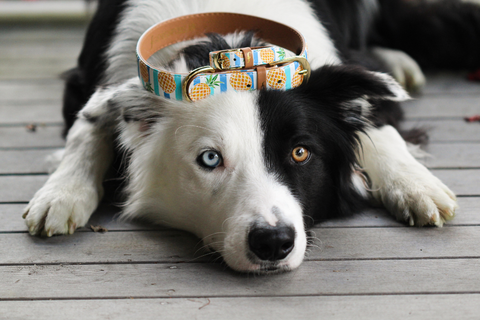
Rattlesnakes & Summer Safety: A Guide for Pet Families
Rattlesnake season is in full swing — and awareness is your best line of defense. From trail walks to backyard lounging, learn how to spot danger, prevent encounters, and keep your pets safe. This essential guide offers expert-backed tips, emergency advice, and trusted resources to give every pet parent peace of mind this summer.

The Importance of Leash Laws: Protecting Your Dog and Your Community
In California, leash laws aren’t just a suggestion — they’re the law. Keeping your dog under control protects not only your pet, but also your community, your legal standing, and your peace of mind. In this article, we explore why leash laws matter, the risks of letting your dog roam freely, and how responsible pet parents help create safer, happier spaces for everyone.

What to Do If Your Dog Is Stung by a Bee
Bee stings are a common occurrence for dogs, but knowing how to respond can make all the difference. If your dog is stung by a bee, the first steps are to remove the stinger, clean the area, and apply a cold compress to reduce swelling. While most stings result in mild discomfort, it’s important to monitor for signs of an allergic reaction, such as difficulty breathing, swelling around the face, or vomiting. If your dog shows any of these symptoms, contact your vet immediately. With prompt care, your dog will recover quickly and be back to enjoying their day!

Why You Should Consider Removing Your Dog’s Collar Before Putting Them in a Crate
While collars are essential for identification and walking, it's important to consider removing your dog's collar before placing them in a crate. Collars can pose choking hazards, cause injuries from friction, or lead to discomfort, especially during crate time. By removing the collar, you eliminate the risk of entanglement, reduce the chances of skin irritation, and promote a more comfortable, stress-free environment for your dog. Additionally, using a microchip or separate ID tags ensures your dog remains identifiable without the risks associated with wearing a collar in the crate. Prioritizing your dog’s safety and comfort is key to creating a secure and restful crate experience.

Pet Safety Alert: The 20 Most Dangerous Plants for Dogs and Cats
Certain plants that are safe for humans can be dangerous, or even deadly, for pets. Cats, dogs, and other animals can be at risk if they ingest, chew, or simply come into contact with certain plants.
